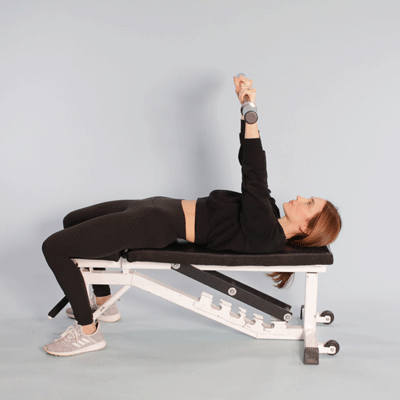Push-pull training divides workouts into two categories: pushing movements that target the chest, shoulders, and triceps, and pulling movements that focus on the back, biceps, and forearms. This approach can enhance muscular strength and power.
A push-pull split is a workout format that groups exercises by whether the primary action is a push or a pull.
These splits are favored by bodybuilders and many athletes because they maximize recovery between sessions and promote a well-balanced physique.
This piece outlines the essentials of push-pull training and provides a routine you can follow to build muscle.
What is push-pull?
In a push-pull system, you train the upper-body muscles responsible for pushing movements on one day and the muscles used for pulling on another day — either the next day or after a rest day, depending on your experience and recovery needs.
Muscles involved in pushing and pulling actions include:
- Pushing: chest, shoulders, triceps
- Pulling: back, biceps, forearms
A separate session for the lower body and core usually follows the push and pull days, either the day after or separated by a recovery day.
Leg musculature includes the front of the thigh (quadriceps), the back of the thigh (hamstrings), along with the glutes and calves.
When following a push-pull plan, you can work each major muscle group up to twice per week if you train six days and take one day off.
Emerging evidence indicates that, for most individuals, training with this kind of split (rather than isolating a single muscle group per day) may produce superior strength adaptations.
Push-pull programming is suitable for those aiming to increase muscle mass and strength, including people new to resistance training.
Note: Training frequency will vary with experience level, which is discussed further below.
SummaryPush-pull is a training format that arranges workouts around whether muscles perform a pushing or pulling action.
Benefits
A push-pull approach offers multiple advantages.
Promotes effective recovery
Traditional bodybuilding splits often dedicate a single day to each body part.
That can mean training chest one day, then shoulders, then triceps on subsequent days.
However, when you train chest, your shoulders commonly assist in movements like bench presses and flyes, so they get worked repeatedly.
Training the same muscles on consecutive days can over time cause excessive strain.
The push-pull arrangement provides the recommended 48–72 hours of rest for muscles to recover before they are trained again, since a major muscle group is typically only targeted once every three days.
Accessible to all levels
People of all training backgrounds can adopt a push-pull split and gain benefits.
Adjust how often you train based on your experience:
- Beginner: Those with under six months of consistent training should alternate workout days with rest days, aiming for a maximum of three sessions per week.
- Intermediate: Lifters with 6 months to 2 years of experience may train three to four days weekly.
- Advanced: People with more than two years of resistance training can work out up to six days a week, with one rest day between cycles.
Sample splits for different experience levels include:
Beginner and intermediate
- Day 1: push
- Day 2: rest
- Day 3: pull
- Day 4: rest
- Day 5: legs and core
Advanced
- Day 1: push
- Day 2: pull
- Day 3: legs and core
- Day 4: rest
- Day 5: push
- Day 6: pull
- Day 7: legs and core
You can tweak per-session volume (sets, reps, and load) for particular muscle groups depending on your goals.
SummaryThe push-pull split supports recovery and is adaptable for lifters of any experience level.
Push-pull exercises
Below is a sample push-pull routine with rest days separating workouts.
Perform 3–4 sets of 8–12 reps for each movement, allowing 2–3 minutes of rest between sets.
Day 1: Push
Seated dumbbell shoulder press: Start with dumbbells at shoulder level and elbows below the wrists. Press overhead until arms are straight, hold briefly, then lower under control back to the starting position.
Dumbbell incline chest press: With dumbbells at the upper chest, press up until arms are extended and then slowly lower back to the start.
Skull crushers: Sit with a barbell on your lap, grip it with palms facing down shoulder-width apart, and keep wrists neutral. Lie back and position the weight above your collarbone. Keeping your shoulders stable, hinge at the elbows to lower the bar just past your head, maintaining elbow position. Pause 1–2 seconds, then extend the elbows to press back overhead. Keep the upper arm (humerus) steady throughout the motion.

Cable rope triceps pushdown: Stand facing a high-pulley cable with a rope attachment. Keeping elbows pinned to your sides, extend your forearms downward and rotate palms down at the bottom. Slowly allow the forearms to return while maintaining elbow position.
Incline dumbbell chest fly: With dumbbells over the upper chest and palms facing each other, arms slightly bent, lower weights out to the sides toward your shoulders, then bring them together overhead in a hugging motion.

Dumbbell lateral raises: Hold dumbbells at your sides with a slight bend in the elbows. Raise the arms laterally until elbows reach shoulder height, then lower under control.

Day 2: Rest
Avoid resistance training on rest days.
Day 3: Pull
Bent-over barbell row: Use a shoulder-width overhand grip on the barbell. Stand with feet hip-width, knees slightly bent, and hinge at the hips while keeping the bar close to your legs. With a neutral spine, pull the elbows back alongside the body, then lower the weight slowly.
Cable pulldown: Grab a wide cable bar and sit with thighs under the supports. Pull the bar down to the upper chest, keeping a slight long curve in the lower back. Slowly return the bar to the start.
Dumbbell shrugs: Hold dumbbells at your sides and shrug the shoulders toward your ears, then relax them down.
Biceps curls: Hold a barbell or dumbbells with an underhand grip shoulder-width apart. With elbows fixed at your sides, curl the weight until the forearms are vertical, pause, then lower with control.

Day 4: Rest
Do not perform resistance training on rest days.
Day 5: Legs and core
Deadlift: Bend down and grip the barbell with a shoulder-width overhand hold. Keep feet flat and lift by extending hips and knees fully. Lower the bar back to the floor by hinging at the hips with a slight bend in the knees.

Barbell back squat: Place the barbell across the back of your shoulders and grip to stabilize. Squat by bending at the hips and knees until they are fully flexed, then stand up by pressing through the heels and contracting the glutes.

Lunges: Stand feet hip-width apart. Step forward beyond a normal stride so one leg is in front and the other behind. Keep the front foot flat and the back heel elevated, bend both knees to about 90 degrees, remain upright and brace the core, then drive back to the start with the front leg.
Seated hamstring leg curls: On a leg curl machine, flex the knees to draw the lower legs toward the back of the thighs, then extend the legs under control.
Dumbbell standing calf raise: Hold dumbbells at your sides and position the balls of your feet on a platform with heels hanging off. Raise the heels as high as possible and lower slowly.
Hanging leg raises: Hang from an overhead bar and raise your legs by flexing at the hips and knees until the hips are fully flexed, bringing knees toward the chest. Lower back down. To increase difficulty, perform with legs straight.

SummaryThis routine shows examples of push, pull, and lower-body/core exercises spaced with rest days in between.
Tips and other factors to keep in mind
Consider the following advice when putting a push-pull plan into practice.
Selecting load
Choose a weight that makes completing the target reps challenging.
If your goal is 10 reps, the ninth and tenth should feel difficult while still allowing you to maintain solid technique by the final rep. If form breaks down, the load is too heavy.
If you can exceed the target reps with good form, increase the weight.
Record sets, reps, and loads for each exercise to monitor progress over time.
Vary your training
Adding variation to your program can help prevent monotony and challenge muscles differently.
Switching attachments, using dumbbells instead of barbells (or vice versa), and alternating cable movements can all add variety.
For instance, use a straight bar rather than a rope for triceps pushdowns, or a barbell instead of dumbbells for incline pressing.
Many movements can be performed with cables as well as free weights, such as:
- biceps curls
- chest flyes
- lateral raises
You can also mix unilateral (one limb at a time) and bilateral (both limbs simultaneously) exercises using cables or dumbbells to further diversify your training.
Nutrition and sleep matter
Without adequate nutrition and sleep, you may be more susceptible to injury and illness, and you’re less likely to reach your training potential. Eating nutrient-dense foods supports recovery and immune function.
Basic guidelines include:
- Prioritize nutrient-rich choices like fruits, vegetables, lean proteins, low-fat dairy, nuts, and legumes.
- Limit alcohol, highly processed convenience foods, and items high in added sugar (desserts, candies, many condiments). These foods are calorie-dense and nutrient-poor and can promote inflammation when consumed excessively, which can hinder recovery and performance.
- Teens should aim for about 8–10 hours of sleep nightly, while adults should target 7–9 hours.
To improve sleep quality:
- Reduce exposure to blue light from screens before bedtime.
- Avoid caffeine in the hours before sleep.
- Use blackout curtains or a sleep mask to help induce deep sleep.
- Keep a regular sleep–wake schedule.
SummaryTo maximize benefits from a push-pull split, pick appropriate loads, vary exercises, and prioritize nutritious food and sufficient sleep.
The bottom line
A push-pull training split organizes workouts around muscle groups that perform similar mechanical actions.
Push sessions focus on the chest, shoulders, and triceps, while pull sessions target the back, biceps, and forearms. A dedicated day for legs and core is also part of this approach.
The push-pull split encourages recovery and is suitable for lifters at any stage of experience.
If you’re unsure how to begin or have concerns about exercise technique, consider working with a certified personal trainer when possible.


















Leave a Reply
You must be logged in to post a comment.